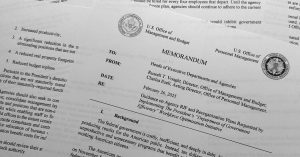Tiny bits of plastic found in the ocean may be tied to a higher risk of disability for people who live in coastal areas with high levels, according to a preliminary study released today, February 25, 2025, that will be presented at the American Academy of Neurology’s 77th Annual Meeting taking place April 5-9, 2025. The study looked at disabilities affecting memory and thinking, mobility and a person’s ability to take care of oneself.
The study does not prove that microplastics cause disabilities; it only shows an association.
Marine microplastics are microscopic pieces of plastic, less than 5 millimeters in length, found in oceans and seas. They come from broken-down plastic trash or products like face scrubs, fishing nets and food wrappers or take-out containers.
“The environment can play a crucial role in our health, and factors such as pollution may impact a person’s risk of developing cognitive decline and other neurological disabilities,” said Sarju Ganatra, MD, of Lahey Hospital and Medical Center in Burlington, Massachusetts. “Our study found in coastal communities with higher levels of microplastics in the water, there were higher rates of disabilities that can affect a person’s life in many ways through thinking and memory, movement and their ability to take care of themselves and live independently.”
The study looked at 218 coastal counties in the United States across 22 states.
Researchers looked at marine microplastic levels across the counties, sorting them into four groups based on marine microplastic levels in the nearby ocean surface. Counties in the low group had zero to 0.005 microplastic pieces per cubic meter (pieces/m³) of ocean water, the medium group had 0.005 to one pieces/m³, the high group had between one and 10 pieces/m³ and the very high group had 10 or more pieces/m³. On average, counties with very high levels had more than 1,000 microplastic pieces/m³ of ocean water, while those with low levels had fewer than 10.
They then looked at the amount of disability among residents in these categories: memory and thinking, mobility, self-care and independent living. Self-care disabilities include difficulty performing activities such as dressing, bathing or getting around inside the home. Independent living disabilities include difficulty performing tasks such as managing finances, shopping or using transportation.
Researchers found in counties with the highest levels of marine microplastics, the average prevalence of thinking and memory disabilities was 15.2% compared to 13.9% in counties with the lowest levels. The average prevalence of mobility disabilities was 14.1% in counties with the hihest levels compared to 12.3% in counties with the lowest levels. The average prevalence of self-care disabilities was 4.2% in counties with the highest levels compared to 3.6% in counties with the lowest levels. The average prevalence of self-care disabilities was 8.5% in counties with the highest levels compared to 7.7% in counties with the lowest levels.
After adjusting for factors that could affect the rate of disability such as heart disease, stroke, depression, air pollution and wealth and resource distribution, researchers found that counties with the highest marine microplastic levels showed a 9% higher rate of disability in memory and thinking, a 6% higher disability in mobility, a 16% higher disability in self-care, and an 8% higher disability in independent living when compared to counties with the lowest levels.
“These findings provide insights into how marine microplastics might affect brain health,” Ganatra said. “More research is needed to explore this connection further and examine the overall public health implications of microplastic pollution.”
Ganatra also noted, “The amount of plastic in different areas can vary due to ocean currents, which can carry and concentrate plastic in certain regions. Other factors, like population density, local waste management, and industrial activities, may also play a role. The reasons are complex and likely involve multiple environmental- and human-related factors working together, but this relationship needs further investigation to be fully understood.”
A limitation of the study was that it was a snapshot in time. Researchers did not follow coastal residents and marine microplastic levels over time.







